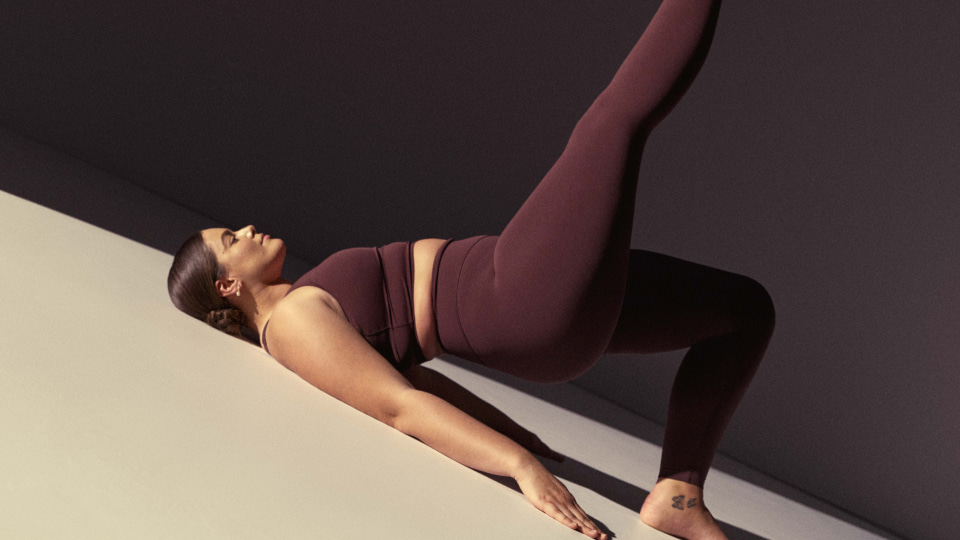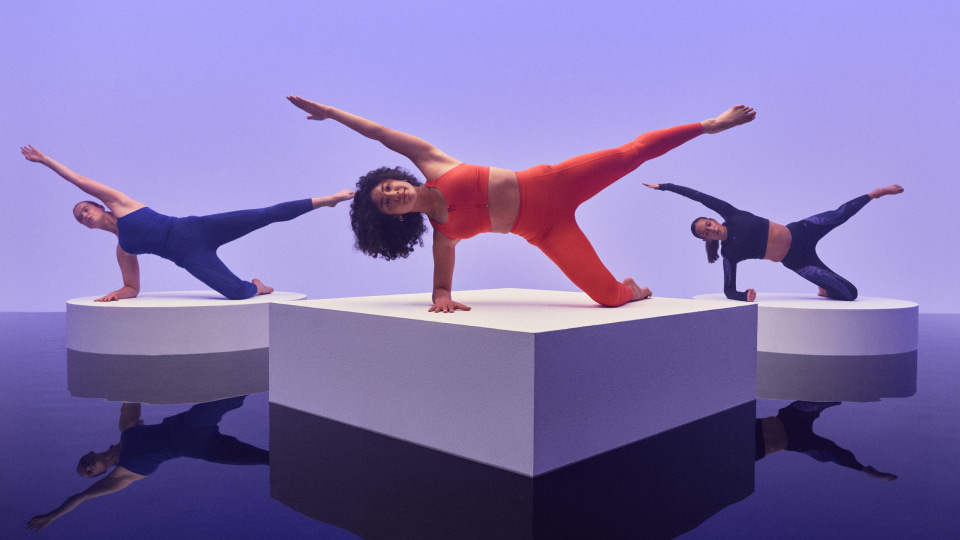WHAT IS TRADITIONAL PILATES?
Pilates involves a collection of low-impact exercises that coordinate movement and breath. The focus is on building strength and mobility, improving postural alignment and strengthening core stabilizing muscles.
HOW YOUR BODY BENEFITS FROM PILATES
On top of being an incredible way to build core strength, increase mobility and enhance feelings of wellness, scientific studies show Pilates can do everything from improve sleep and better your sex life, to lift your cognitive function and boost immunity.
Pilates is also good for helping improve body awareness. Dancer and trainer Summer Bradley says this is such a powerful benefit: “Not only does it help me feel more in control, it helps me avoid injury and train more effectively in other workouts. Moving with control gives me the time to correct my alignment and has strengthened my core and glutes.”
6 OF OUR FAVORITE SCIENCE-BACKED WAYS PILATES BENEFITS YOUR BODY
- Pilates can improve balance and body awareness. The focus on mindful movement and breath enhances proprioception and heightens awareness of how your body moves. This can prevent injuries and falls, which is particularly important as we age.
- Pilates can increase mobility as you use slow and controlled stretching movements to improve flexibility and strengthen muscles at the same time. While improved flexibility doesn't necessarily provide any functional benefit, increased mobility is valuable as it improves the movement of your joints.
- Pilates can reduce stress and boost your mood, energy and motivation. During Pilates, your nervous system responds to the focus on breathwork by lowering cortisol levels, which will reduce stress over time. And, like with any exercise, the increased oxygen flow and blood circulation stimulate feel-good endorphins and give you a boost of energy. A study of students showed Pilates can boost motivation, achievement and cognitive function.
- Pilates can perk up your posture by strengthening postural muscles and bringing attention to your body alignment. With improved posture, you reduce the risks of headaches, as well as shoulder and back pain.
- Pilates can reduce injury risk by using strength-building exercises to increase the support and stability of your joints as they move. This makes it particularly beneficial for sportspeople and exercisers.
- Pilates can ease lower back pain. Physical activity is considered the magic lotion for back pain. Because Pilates engages the deep core and pelvic floor muscles, it’s a powerful way to build strength and this can help stabilize the back.

4 POPULAR TYPES of Pilates
Mat Pilates
Perfect for beginners, classic Mat Pilates provides a great introduction to popular Pilates movements. Using nothing but bodyweight, Mat Pilates exercises help improve core control, strength and stamina. Popular exercises include: hundreds, a variation on the common crunch where you do 100 pulses; leg circles, which challenge core stability; planks and side planks; plus single and double leg stretches.
Reformer Pilates
Reformer Pilates involves using a reformer machine, which is a bed-like sliding carriage with straps, springs and pulleys. Many of the exercises are similar to mat Pilates movements, but holding and pulling the straps adds resistance and increases intensity.
Contemporary Pilates
Considered by many as hybrid Pilates, this contemporary approach breaks the traditionally ridged sequence of classic Pilates moves by blending in other types of movement. Dance and Pilates is a popular Pilates hybrid, as are yoga and Pilates. You can experience a fusion of power yoga, barre and Pilates when you try LES MILLS SHAPES™, and a mix of yoga and Pilates when you try BODYBALANCE™.
HIIT Pilates
Tapping into the huge popularity of high-intensity interval training, HIIT Pilates mixes Pilates exercises like bridges, leg lifts and planks, with intervals of heart-pounding cardio. This means you benefit from controlled strength building while also sparking increased calorie burn,

Pilates teacher Yayoi Matches says Pilates is a remarkable way for people to improve awareness of their body. “Working out is not always about how much you sweat, how much strain you put your body through or pushing for fast results. Life is actually really long, and for us to live a long life filled with love and energy we must understand that this starts from the mind – a connection to body within.”
Yayoi uses Pilates as an opportunity to listen to her body. “It’s a time to understand your needs, to truly give what is calling. Whether it’s just to breathe and tune into your nervous system, or to engage your whole body and use energy to awaken and vitalize.”
Glen Ostergaard, who leads the creation of workouts like BODYPUMP™, RPM™ and LES MILLS SPRINT™ is also a big Pilates advocate. "With Pilates, you can improve your body’s function without having to exhaust yourself. It’s about how you do the move, not how many reps or how hard you go.” Glen says Pilates exercises are great in isolation and to complement other forms of exercise. “It improves function, alignment, core strength, posture, control, concentration, breath … there are so many benefits." Glen suggests that anyone just starting out begins slowly, identifies their own strength and flexibility ranges and works within them, as well as staying consistent.
DOES PILATES HAVE ANY DISADVANTAGES?
Pilates is undoubtedly a winning fitness formula. But it is just one element of a well-balanced routine. The American College of Sports Medicine (ACSM) guidelines recommend a varied training program featuring cardiorespiratory, resistance, and flexibility exercises. In most cases, there is not a significant cardio element to Pilates, so it’s important to counter this when shaping a well-balanced routine.
IS PILATES REALLY THAT DIFFERENT FROM YOGA?
Pilates and yoga are often considered similar workouts, perhaps due to the fact they are both low-impact and require a focus on breathing. But there are plenty of differences. Most notably, during yoga, you typically adopt a pose and hold it, or flow through to another pose. During Pilates, you adopt a position and challenge the muscle groups by pulsing or moving your limbs as levers.
